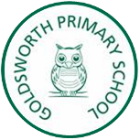Learning at Goldsworth Primary School
At Goldsworth, we believe that every child must be valued and respected for what he or she brings to the learning situation. It is our task to build on their existing knowledge, experience and skills and to promote an environment where the highest quality learning takes place. We feel that the learning and teaching at Goldsworth should equip children with a toolkit of transferable skills to enable them to become learners for life and with the skills and knowledge that they require to function positively in their present and future lives.
The curriculum is organised as far as possible through an integrated cross-curricular approach. We use a variety and range of teaching styles. We believe no single style of teaching will be suitable for all purposes; sometimes it will be appropriate to teach the class as a whole; sometimes to teach small groups or individuals and sometimes pupils should take considerable responsibility for deciding the direction of their own work.
The importance of play
In their early years, we know that children learn best through well planned play, both indoors and outdoors. Play is a powerful medium for learning which results in pupils learning with enjoyment and challenge. Learning by ‘doing’ continues throughout the school both in terms of learning being practical, physical and, where possible, outdoors and in terms of children being actively engaged in purposeful tasks which have a real life purpose e.g. running a café or setting up a museum.
Good learning behaviours
Good learning behaviours are key to acquiring the knowledge and skills covered in our curriculum. At Goldsworth, we talk about our learning toolkit which covers four areas of learning: resilience, reciprocity, resourcefulness and reflectiveness.
Learning together
In all classrooms at Goldsworth, talk partners or buddies are used to promote good learning. When the teacher poses a question the children will have a chance to think about their answer, discuss it with their partner and then could be randomly chosen to give their answer to the rest of the class. This strategy has been proven, through research, to increase participation and active learning. It is one of the many teaching and learning strategies which we have adopted from the Shirley Clarke research project which several of our teachers took part in. Another is getting children to give each other feedback on their work, whether that feedback is verbal or written, following guidelines which the class have established together. You may therefore see some work in your child’s books which has been ‘peer marked’

